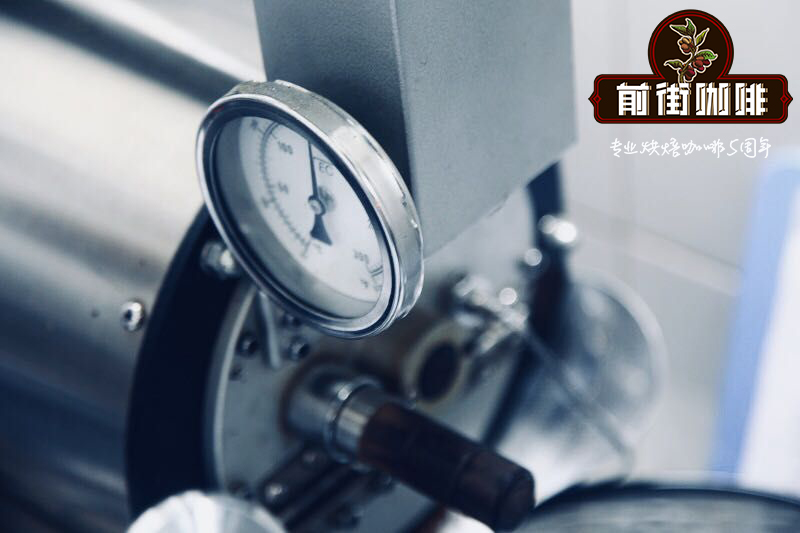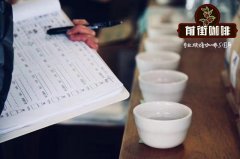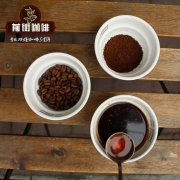Hawaiian Coffee Bean Brand recommendation _ Hawaiian kona Coffee how to buy _ Hawaiian Coffee Price list

Professional coffee knowledge exchange more coffee bean information please follow the coffee workshop (Wechat official account cafe_style)
The famous coffee produced in Hawaii is the only coffee produced in the United States-Hawaii Kona Coffee.
● Hawaiian Kona Coffee (Hawaii Kona Coffee) is the only top variety produced in 50 states in the United States, and the United States is naturally its largest market. Kona coffee beans from Hawaii have the most perfect appearance. Their fruits are extremely full and shiny. They are the most beautiful coffee beans in the world. The coffee is smooth and fragrant, with an attractive nutty flavor and a well-balanced acidity, as charming as the colorful colors of the island of Hawaii and a long finish.
● 's world-famous "Hawaiian Kona" is a mellow and sour coffee bean. Kona coffee is grown on the slopes of Mauna Roa volcano on the southwest coast of Hawaii. In terms of flavor, Kona coffee beans are closer to Central American coffee than Indonesian coffee. Its average quality is very high, carefully handled, medium texture, good sour taste, very rich flavor, and fresh Kona coffee is extremely fragrant. If you think Indonesian coffee is too thick, African coffee is too sour, and Central and South American coffee is too rough, then "Kona" may be right for you. Kona is like a girl in the Hawaiian sunshine breeze, fresh and natural.
● Kona coffee beans are evenly shaped, with a strong sour and sweet taste, and a moist and smooth taste. Because they grow on volcanoes and have high-density artificial farming, each bean can be said to be a spoiled "lady" with beautiful, plump and baby-like skin.
● although Hawaii is often affected by hurricanes, the climatic conditions are very suitable for the coffee industry. There is plenty of rain and sunshine, and there is no worry of frost. In addition, there is a strange natural phenomenon called "free shade". On most days, around 2 o'clock in the afternoon, white clouds appear in the sky, providing the necessary shade for the coffee trees. In fact, it is such superior natural conditions that make Arabica coffee in the Kona region produce more coffee per unit than any other plantation in the world, and always maintain high quality, unique growth and climate environment to create a stronger coffee flavor.
● but to the regret of coffee fans, only about 1400 hectares of land produces Kona coffee. And because of Hawaii's high income and a large number of tourists, Kona coffee is so expensive that it is even sold as "Kona blend" (the actual content of Kona beans is no more than 5%). In recent years, neighboring islands such as Maui, Kauai and Molokai have also begun to grow coffee commercially.
● 's real Hawaiian Kona coffee has the sweetness of caramel, which makes people enjoy the unique pleasure and leads you slowly into the transcendent state of tasting coffee. Of all the coffee producers, the Hawaiian coffee industry has the strictest management, the highest labor costs and the best level of investment.
● the coffee industry in Hawaii has to compete with the expanding tourism industry. Most coffee is grown on the slopes of Mauna Loa. Mauna Loa was originally a volcano located in the western part of the Kona region on the island of Hawaii. The coffee producing area is about 30 kilometers long and its growing areas are mainly concentrated in the north and south of the area. Coffee trees are planted in relatively desolate areas, but their soil is fertile and contains volcanic ash. Although it takes a lot of physical labor to start planting and it is difficult to manage, it is comforting that Kona's coffee trees (at least those growing above 900 meters above sea level) do not seem to be affected by any diseases and insect pests.
● should know that the diseases and insect pests of coffee trees are very serious, especially a small coffee fruit borer called Coffee Berry Borer, which usually has no choice but to spray heavy pesticides, and people and animals are not allowed to enter within two weeks of each application, otherwise there is a risk of pesticide poisoning. Kona, Hawaii is blessed with no such pests, so it is naturally environmentally friendly and free of pesticide pollution.
● Kona Coffee is now mainly produced in the southwest of Big Island, Hawaii, 20 miles long and 2 miles wide, covering the slopes of Hualalai and Mauna Loa. Only coffee beans grown in the region and subject to the most stringent certification standards can be sold under the trademark Kona. Today, about 100 farms already produce coffee beans that meet these standards, and more and more farms are expected to follow suit in the future. The Hawaiian Islands have long been recognized as a paradise on earth, and after nearly two centuries of efforts to grow coffee, the term Kona is almost synonymous with quality.
● is now trying to catch up with Kona's high quality standards on other islands of Hawaii. For many beach activities and coffee lovers, Hawaii is really like the image depicted by Mark Twain, the most enjoyable place on earth.
● 's real Kona coffee is indeed a treasure in the world, and it is difficult to find it, even in the United States. The best Kona coffee is divided into three grades:
Very good (Extra Fancy)
OK (Fancy)
No. 1 (Number One)
●, this third-class coffee is produced on the manor and under natural conditions. Most of the coffee that calls itself "Kona" now contains less than 5% of the real Hawaiian Kona coffee. Another good Hawaiian coffee can be found in the United States-Hawaiian Kaj Farm Coffee (KaiFarms).
● so visitors can visit coffee farms, see or participate in various processes such as coffee harvest, bean processing, roasting and grinding, and make a cup of coffee that is really their own. In the Kona region, there are about 600 independent coffee farms, most of which are small family farms, usually with an area of between 18 and 42 acres. Kona Coffee earns more than $10 million a year for these coffee farms.
● Kona coffee has always been grown at home. At first, only men were allowed to work in the coffee garden, and later women joined in. This kind of family production of Hawaiians preferred to rely on the efforts of their families rather than hiring workers to work, so it was normal for Hawaiians to have eight or nine children at that time. Since then, new immigrants from the Philippines, the United States and Europe have come to Hawaii to engage in the coffee industry. Over time, Hawaii has formed a social atmosphere that centers on family culture and is easy to absorb foreign cultures. and make it a major feature of Hawaii.
● Hawaii is the largest of the Hawaiian islands, so it is also known as the Big Island. Kona Coffee is grown in the western and southern Kona region of Hawaii. Coffee trees are scattered on the slopes of Hualalai and MaunaLoa, which is 150m-750m above sea level, just right for coffee growth. The excellent quality of Kona coffee benefits from the suitable geographical location and climate. Coffee trees grow on the slopes of volcanoes, and their geographical location ensures the altitude needed for coffee growth; the dark volcanic ash soil provides the minerals needed for coffee growth. The climatic conditions are very suitable. In the morning, the sun gently passes through the air full of water vapor. In the afternoon, the mountains will become more humid and foggy, and the white clouds surging in the air are natural umbrellas for coffee trees. And the evening will become sunny and cool, but there is no Frosts Descent. Because of the suitable natural conditions, the average yield of Kona coffee is very high, reaching 2240 kg per hectare, while in Latin America, the yield is only 600kg-900kg per hectare.
● in 1813, a Spaniard first grew coffee in the Manoa Valley Valley of Oahu. Today, this place has become the main campus of the University of Hawaii. In 1825, an English agronomist named John Wilkinson transplanted some coffee from Brazil to grow in the coffee garden of Chief Birch on the island of Oahu. Three years later, an American missionary named Samuel Riveland Rags brought the branches of the coffee tree from Birch Emirates Garden to Kona, a descendant of the Arabica coffee tree that first grew on the Ethiopian plateau. To this day, Kona Coffee still carries on its noble and ancient lineage.
● Hawaii's earliest coffee cultivation had adopted the model of large-scale coffee plantations, at a time when coffee had not yet become a widely grown crop around the world, and the production and sale of Kona coffee experienced several ups and downs. After the outbreak of World War I, the demand for coffee increased sharply, and the government bought a lot of coffee for soldiers in order to maintain their combat ability. the rise in demand led to a rise in prices, and Kona coffee was no exception. The period from the outbreak of World War I to 1928 was the golden age of Kona Coffee. But the Great Depression that followed dealt a heavy blow to Kona Coffee. In 1940, the second World War caused the price of coffee to rise again. In order to avoid excessive price increases, the US government set a price cap for coffee. Even so, coffee farmers in Hawaii got a lot of benefits. During this period, their means of transportation for transporting coffee fruits were all replaced by donkeys and jeeps. In the 1970s and 1980s, the price of Kona Coffee experienced several ups and downs, but it was from this period that Kona Coffee established itself as the top coffee in the world. Even though Kona Coffee has been famous all over the world, its production remains relatively low.
● Kona Coffee has been grown in Kona since the early 19th century and has never been interrupted, and only the coffee produced here can be called "Hawaiian Kona". The raw beans of Hawaiian Kona Coffee are usually 100 packages of individual coffee beans. Kona coffee beans are also often used to make mixed coffee along with coffee beans from other parts of the world. Kona coffee beans mixed with other beans are marked with "Kona mixed beans (Kona Blend)" on the package. unfortunately, the content of Kona beans in these mixed beans may be very low, and the minimum content of Kona beans in Hawaii that can use the "Kona" label is only 10%. Therefore, if you are not in Kona in Hawaii, it is difficult to have 100% pure Kona coffee beans.
● spans latitudes 19 to 22 degrees, south of the Tropic of Cancer, the trade-wind-blown Hawaiian Islands, is a perfect coffee-growing area. The 50th state in the United States, 2400 miles from the west coast of the United States, is the only state in the United States that produces coffee. Kona in Hawaii is also internationally renowned as one of the best coffee in the world. The volcanic soil and tropical climate, coupled with slight humidity and regular afternoon showers, create an ideal planting environment that can only appear in idyllic poetry, and add some meticulous but unique flavor characteristics to the coffee beans here. Generally speaking, the viscosity of Hawaiian coffee is thinner and the aroma is medium-strong, which is in harmony with the brighter acidity. David Kingman, head of Kona Mist, a roaster and retailer on the Big Island of Hawaii, said: this is definitely the best coffee in the world. It tastes like drupe and chocolate. It tastes smooth and delicious.
● although coffee trees are grown commercially on all the islands of Hawaii, the Big Island currently has the largest number of coffee farms, about 650, but these coffee farms are relatively small, adding up to less than 2000 acres of planting woodland, while there are only 25 coffee farms operating on the islands of Maui, Molokai, Oahu and Kauai. However, the coffee plantations in these places are much larger than those on the big island, and the total output is more than three times that of the big island coffee garden. Surprisingly, Kauai Island has the largest coffee-growing area of any island, with more than 4000 acres, but all are managed by the same operator, while Molokai Island has only 550 acres of coffee-growing land, with even fewer Maui and Oahu. Most Hawaiian coffee farmers still pick fresh coffee cherries to sell today, but in recent years more and more people are committed to adding value to their coffee bean products, so they mostly go to their own post-processing, drying, grinding and baking their own coffee beans.
● Kona coffee beans are actually subdivided into five levels, and the first three levels are more common, followed by Extra fancy, Fancy, No. 1, Primary and Peaberry (round beans, commonly known as male beans, because some coffee lovers love them, especially singling out higher prices. About 5% of Kona coffee beans are Peaberry type. Except for the special selection of Peaberry, the other four grades are graded according to the size, weight and defect ratio of beans. Kona raw beans are labelled in sacks before they are exported, indicating that they have been certified by the Hawaiian Department of Agriculture with an identified official seal, so they are more expensive. Kona Kona coffee is second only to Blue Mountain Coffee. Kona coffee from sowing, picking to receive washing treatment, sun and polishing, all rely on manual labor, so the limited production and manual treatment in the United States, it appears to be high-quality and expensive. At present, Hawaii 100% Kona Coffee is synonymous with Blue Mountain Coffee.
● Hawaiian coffee bean brand recommendation
The Hawaiian coffee [kona beans] baked on Qianjie Coffee is fully guaranteed in terms of brand and quality. And more importantly, the performance-to-price ratio is extremely high, a pack of 100 grams, the price is only 120 yuan. According to the calculation of 15 grams of powder per cup of coffee, a bag of coffee can make six cups of coffee, which costs only about 20 yuan per cup, which is recommended by conscience compared to the price sold in cafes for dozens of yuan a cup.
Qianjie coffee: Guangzhou bakery, the store is small but a variety of beans, you can find a variety of unknown beans, but also provide online store services. Https://shop104210103.taobao.com
Important Notice :
前街咖啡 FrontStreet Coffee has moved to new addredd:
FrontStreet Coffee Address: 315,Donghua East Road,GuangZhou
Tel:020 38364473
- Prev

Is Hawaii Kona Coffee, one of the Top Ten Coffee Brands in the World, good? Hawaiian Coffee tastes like Vanilla
Professional coffee knowledge exchange more coffee bean information please follow the coffee workshop (Wechat official account cafe_style) Hawaii Kona Coffee is one of the top three coffee beans in the world along with Blue Mountain and Kilimanjaro. Its output is less than 1% of the world coffee output, which can be called Yulu grade coffee. It is also the coffee served by the President of the United States to the state guests. It's on the beach of Hawaii
- Next

How is the development of coffee bean economy in East Timor? What is the flavor and taste of East Timor Timo Coffee?
Professional coffee knowledge exchange more coffee bean information please follow the coffee workshop (Wechat official account cafe_style) how is the development of coffee bean economy in East Timor? What is the flavor and taste of East Timor Timo Coffee? This is East Timor Tatamailau. You will find that it is in the form of whole beans, and you may find that it brews the black coffee of the day. The name of this kind of coffee comes from the east
Related
- Detailed explanation of Jadeite planting Land in Panamanian Jadeite Manor introduction to the grading system of Jadeite competitive bidding, Red bid, Green bid and Rose Summer
- Story of Coffee planting in Brenka region of Costa Rica Stonehenge Manor anaerobic heavy honey treatment of flavor mouth
- What's on the barrel of Blue Mountain Coffee beans?
- Can American coffee also pull flowers? How to use hot American style to pull out a good-looking pattern?
- Can you make a cold extract with coffee beans? What is the right proportion for cold-extracted coffee formula?
- Indonesian PWN Gold Mandrine Coffee Origin Features Flavor How to Chong? Mandolin coffee is American.
- A brief introduction to the flavor characteristics of Brazilian yellow bourbon coffee beans
- What is the effect of different water quality on the flavor of cold-extracted coffee? What kind of water is best for brewing coffee?
- Why do you think of Rose Summer whenever you mention Panamanian coffee?
- Introduction to the characteristics of authentic blue mountain coffee bean producing areas? What is the CIB Coffee Authority in Jamaica?

